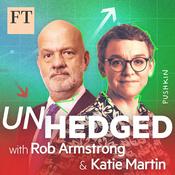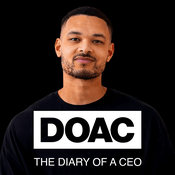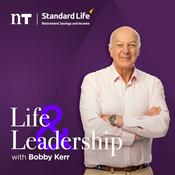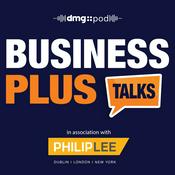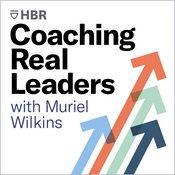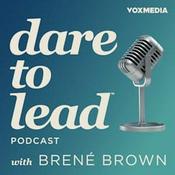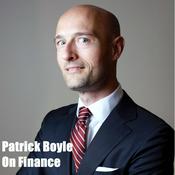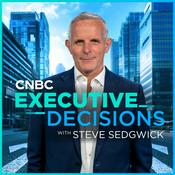189 episodes

What I Learned Building Retail Media Breakfast Club in One Year (50,000 Downloads Later)
16/12/2025 | 13 mins.
This is the final episode of the year, and honestly, I can’t quite believe how far Retail Media Breakfast Club has come since launching back in January. From passing 50,000 downloads, to realizing just how many smart, thoughtful people are paying attention, this episode is a moment to pause, reflect, and share what I’ve learned along the way.I unpack some very personal lessons from running a near-daily newsletter/podcast in an industry that’s still very much being invented in real time. From embracing beginner’s mindsets and navigating burnout, to understanding why drama drives engagement (and when it’s not worth it), this is a behind-the-scenes look at what it actually takes to show up consistently.This episode is sponsored by Mirakl AdsTimeline[00:00] – Reflecting on launching Retail Media Breakfast Club and hitting 50,000 downloads[01:00] – What Vampire Weekend taught me about building a career in retail media[02:25] – Why we’re all beginners in retail media (even the so-called experts)[04:15] – My biggest blind spot: ad tech, and how I had to relearn the fundamentals[06:45] – The reality of publishing content four days a week and managing burnout[09:00] – Why “quantity is quality” and how consistency creates real momentum[11:45] – Drama, debate, and drawing personal boundaries in public industry discourseLinks & ResourcesMy tech stack flow diagram - How an RMN's tech stack impacts your advertising resultsBreakfast for Dinner with Retail Media Breakfast Club & Mirakl Ads in NYC. I am co-hosting a dinner for RMN leaders with the sponsor of this newsletter & Podcast, Mirakl Ads. Join me, Mirakl’s Chief AI officer Anne Baschet, and RMN leaders from Costco & CVS for Breakfast for Dinner on Saturday Jan 10, 2026. Senior leaders at RMNs may register their interest here.Retail Media Therapy Celebrity Death Match in NYC. I’m doing another debate, this time going to head-to-head with my frenemies-slash-industry legends Colin Lewis, Sarah Marzano (EMARKETER), and Claire Wyatt (The Trade Desk). Hosted by Zitcha, QSIC and Grace & Co. Monday Jan 12 - arrive at 5 for a 5:30 kickoff. Register your interestSubscribe to Retail Media Breakfast Club's daily newsletterFollow Kiri on LinkedIn

My Retail Media Content Diet: How I Stay Ahead of Trends Without Burning Out
15/12/2025 | 14 mins.
I’m pulling back the curtain on something I’m asked about constantly: how I actually stay on top of the nonstop flow of retail media news, analysis, and thought leadership. I definitely don’t catch it all, and you shouldn’t feel bad if you don’t either. But I have built a rhythm and a process that helps me make sense of this fast-moving space without completely frying my brain.In today’s ep, I share the tools, habits, and systems I use. From the podcast apps I separate for work vs. unwinding, to the newsletters and Substack ecosystem that function like “vegetables” in my content diet, to my favorite ways to capture and store insights so I can actually find them later. I also dive into why traditional trade media still matters, and how to make LinkedIn work for you, even with its currently maddening algorithm. If you’re looking to level up your own media diet in 2026, this one’s for you.This episode is sponsored by Mirakl AdsTimeline[00:15] – Why I still feel behind, even as a full-time content consumer/creator[01:30] – The mega resource database I’ve pulled together for you[02:15] – How I split my podcast listening between Apple Podcasts and Snipd[03:30] – The Snipd → Notion workflow that saves my long-term memory[04:50] – Why I chose beehiiv over Substack (and the network-effect dilemma)[07:30] – The enduring value of traditional media and industry publications[09:00] – My love–hate relationship with LinkedIn’s algorithm, and how to tame itLinks & ResourcesGet the full list of my favorite publications, newsletters and podcasts hereBreakfast for Dinner with Retail Media Breakfast Club & Mirakl Ads. I am co-hosting a dinner for RMN leaders with the sponsor of this newsletter & Podcast, Mirakl Ads. Join me, Mirakl’s Chief AI officer Anne Baschet, and RMN leaders from Costco & CVS for Breakfast for Dinner on Saturday Jan 10, 2026. Senior leaders at RMNs may register their interest here.Retail Media Therapy Celebrity Death Match. I’m doing another debate, this time going to head-to-head with my frenemies-slash-industry legends Colin Lewis, Sarah Marzano (EMARKETER), and Claire Wyatt (The Trade Desk). Hosted by Zitcha, QSIC and Grace & Co. Monday Jan 12 - arrive at 5 for a 5:30 kickoff. Register your interestSubscribe to Retail Media Breakfast Club's daily newsletterFollow Kiri on LinkedIn

Why Amazon Can’t Stop Agentic Commerce — And Why Other Retailers Must Lean In
11/12/2025 | 13 mins.
Agentic commerce continues to spark tension across the industry. Today, I’m diving straight into one of the biggest debates: whether Amazon’s refusal to embrace open agent interoperability means agentic shopping is doomed. This conversation was inspired by ad industry analyst Eric Seufert, whose skepticism about agentic commerce I genuinely value. But as I explain, there are several key assumptions baked into his argument I simply don’t buy.I break down why Amazon’s structural advantages don’t automatically translate to veto power over agentic commerce, why grocery is the actual battleground to watch, why Walmart and other retailers hold more leverage than expected, and how interoperability economics make an agent-driven future increasingly inevitable. Most importantly, I share why retailers shouldn’t play a game of chicken with Amazon.This episode is sponsored by Mirakl AdsTimeline[00:00] Why Eric Seufert’s skepticism about agentic commerce is healthy.[01:30] Breaking down Amazon’s structural advantages and the Rufus effect.[03:36] The flaw in assuming agentic commerce requires Amazon’s participation.[06:30] Why grocery — not general ecommerce — is the true agentic battleground.[08:30] The signal that Amazon already sees lower-funnel risk ahead.[10:46] Interoperability economics and why most retailers want agents to thrive. [12:26] Why Amazon isn’t the only car in the agentic commerce “game of chicken.”Links & ResourcesEric Seufert threw down the gauntlet against agentic shopping a couple of months ago in his essay Agentic Commerce is a MirageRecently, Eric revisited one of those arguments on LinkedIn: Amazon as gatekeeperFollow Eric Seufert on LinkedInRead my related articles:Unfiltered Thoughts From UnboxedHave Retailers Lost Discovery to AI for Good?Subscribe to Retail Media Breakfast Club's daily newsletterFollow Kiri on LinkedIn

5 Big Marketing Lessons Retail Media Must Steal From Venture Capital
10/12/2025 | 9 mins.
In this episode of the Retail Media Breakfast Club, I reflect on a recent conversation from the a16z Podcast and the surprisingly relevant lessons that venture capital can teach retail media networks. Listening to Marc Andreessen, Ben Horowitz, and Margit Wennmachers talk about how a16z deliberately broke VC’s long-standing “code of silence” reminded me so much of the paradoxes I saw back when I ran my Amazon agency. In short; everyone wanted transparency, but no one wanted to contribute to it.Today I'm breaking down five powerful marketing lessons from the world of VC that retail media networks can apply right now to stand out and build real relationships with brands. From redefining who the true customer is, to creating genuinely useful content, to bundling value in ways that go far beyond ad inventory — these highlights completely reframed how I think about RMN differentiation. This episode is sponsored by Mirakl AdsTimeline[00:00] Why clients loved my agency's work but refused to give testimonials (and how this quandary mirrors retail media’s transparency problem)[01:11] Lesson 1: Redefining who the real customer is (and why retailers struggle with B2B motions)[03:04] Lesson 2: Creating content that actually serves brand advertisers instead of repeating the same three USPs[05:39] Lesson 3: Building direct channels instead of relying on trade-press-only PR strategies[07:36] Lesson 4: The “bundling” model inspired by Hollywood talent agencies (and its RMN equivalent)Links & ResourcesWatch full a16z episode on YouTube - The Secret Marketing Strategy That Built a16z: From Zero to Legendary VC FirmSubscribe to the a16z PodcastRead my related articles:Why RMNs Keep Their Tech Stacks SecretHow Can RMNs Tap Upper-Funnel Brand BudgetsSubscribe to Retail Media Breakfast Club's daily newsletterFollow Kiri on LinkedIn

Amazon’s Sea of Ads: Why 25+ Sponsored Products Per Page Still Works
09/12/2025 | 9 mins.
In this episode, I expand on my latest column in The Drum, where I unpack new data showing that Amazon now averages 25+ sponsored products per page load—far more than Walmart or Home Depot. Despite fears that ad overload would harm the customer experience, Amazon maintains near-universal ad coverage while keeping relevance high, even on complex long-tail searches. That level of performance is only possible because Amazon invested early in sophisticated ad tech capable of matching ads to intent across every type of query.I also explore why Amazon’s high-density ad surface still works economically. By expanding formats and inventory, Amazon moderates CPC inflation while still driving huge revenue volumes—something most mid-tier retailers can’t replicate without upgrading their ad tech. For retailers, brands, and agencies, Amazon’s model is both a blueprint and a warning: dense ad monetization only works if relevance, user experience, and supply all scale together.This episode is sponsored by Mirakl AdsTimeline00:00 – Amazon really is a sea of ads!00:30 – How Amazon’s ad load compares to Walmart and Home Depot01:35 – Why Amazon’s dense ad surface still works02:45 – Long-tail queries and why most retailers fail to monetize them04:00 – The “doom loop” for mid-tier retail media networks05:10 – Amazon’s Unified Campaign Manager and keeping relevance high06:45 – The economics of abundant inventory and moderated CPCs08:15 – What Amazon’s ad saturation means for everyone elseLinks & ResourcesRead my full article on The Drum - You're not imagining it: Amazon really is a sea of ads (and it still works)Get Pentaleap's H2 2025 Sponsored Products Benchmarks ReportRead my articles:The Retail Media Doom LoopBest Buy Wants To Become An Ad Platform, Not Just Another RMNSubscribe to Retail Media Breakfast Club's daily newsletterFollow Kiri on LinkedIn
More Business podcasts
Trending Business podcasts
About Retail Media Breakfast Club
Listen to Retail Media Breakfast Club, The Other Hand and many other podcasts from around the world with the radio.net app

Get the free radio.net app
- Stations and podcasts to bookmark
- Stream via Wi-Fi or Bluetooth
- Supports Carplay & Android Auto
- Many other app features
Get the free radio.net app
- Stations and podcasts to bookmark
- Stream via Wi-Fi or Bluetooth
- Supports Carplay & Android Auto
- Many other app features


Retail Media Breakfast Club
download the app,
start listening.

